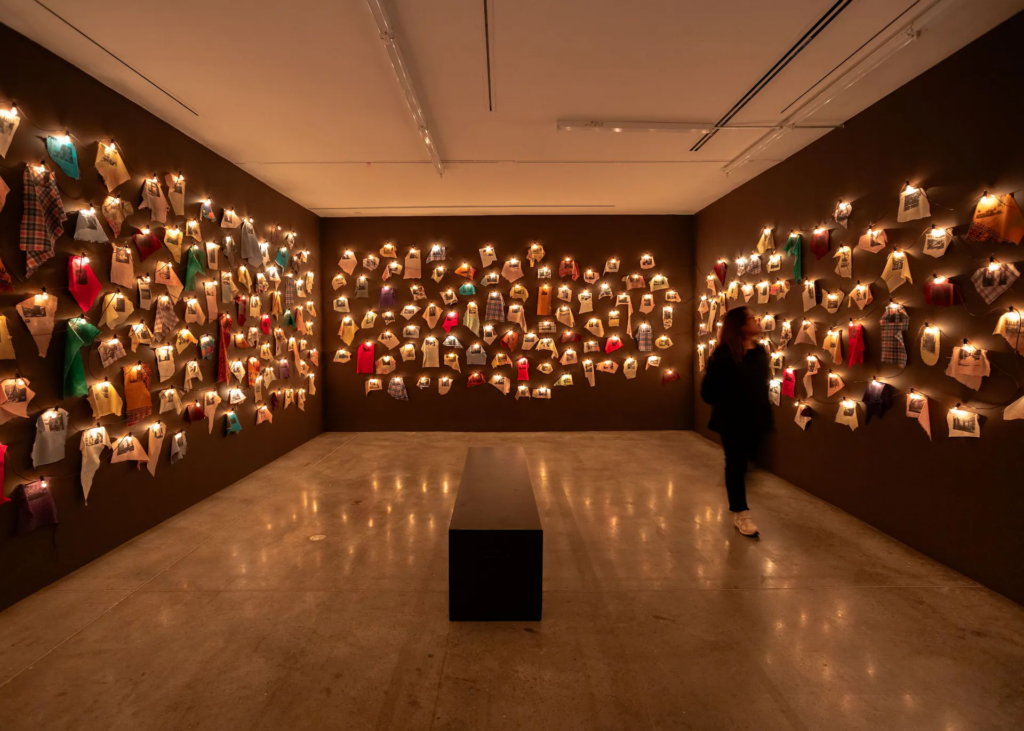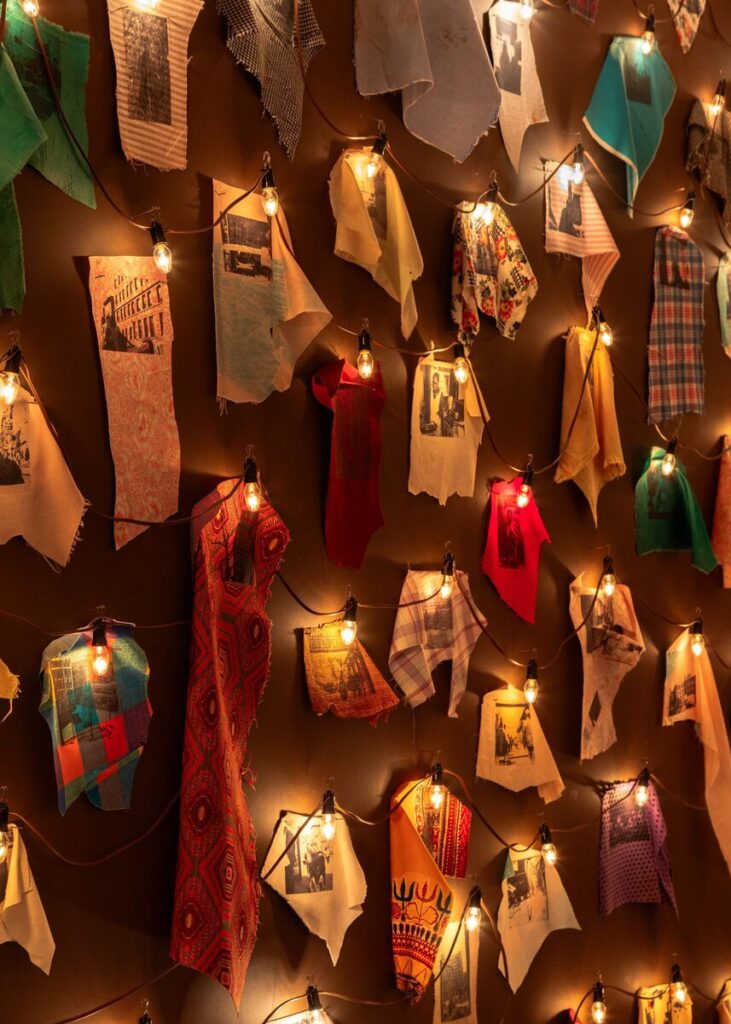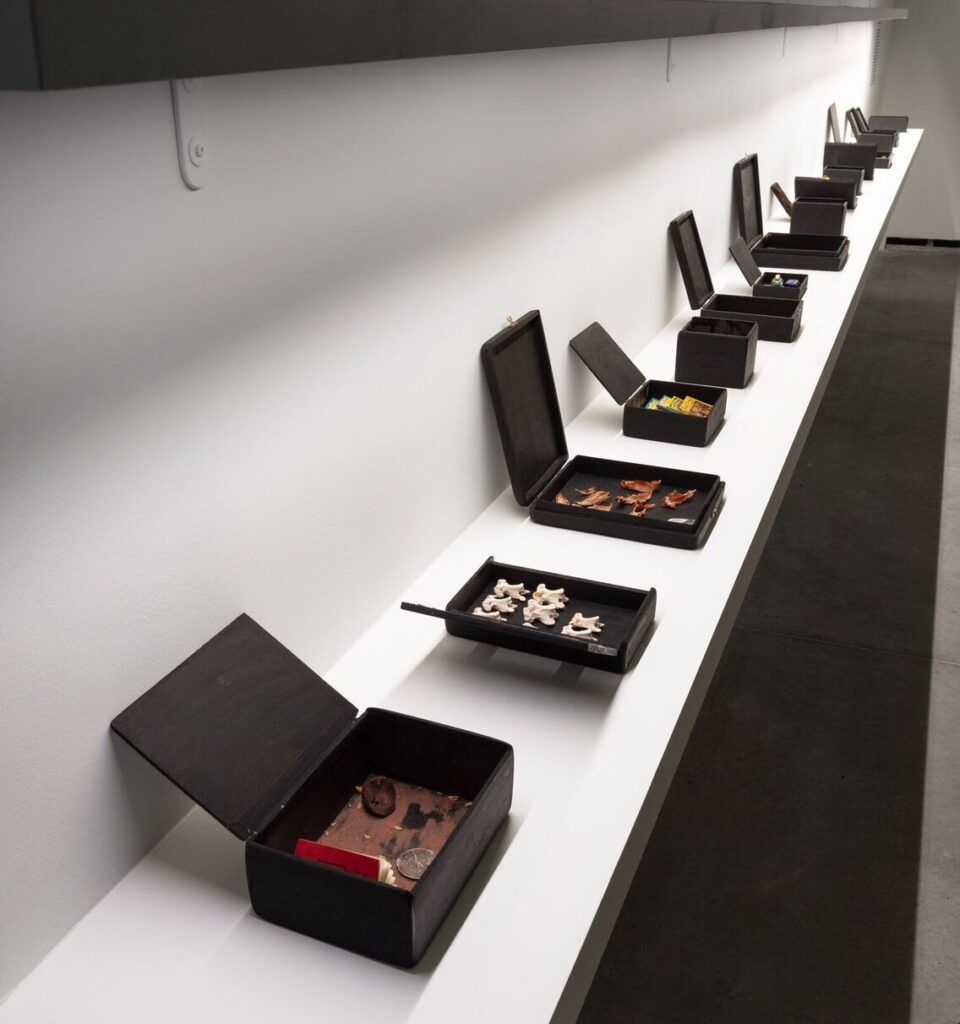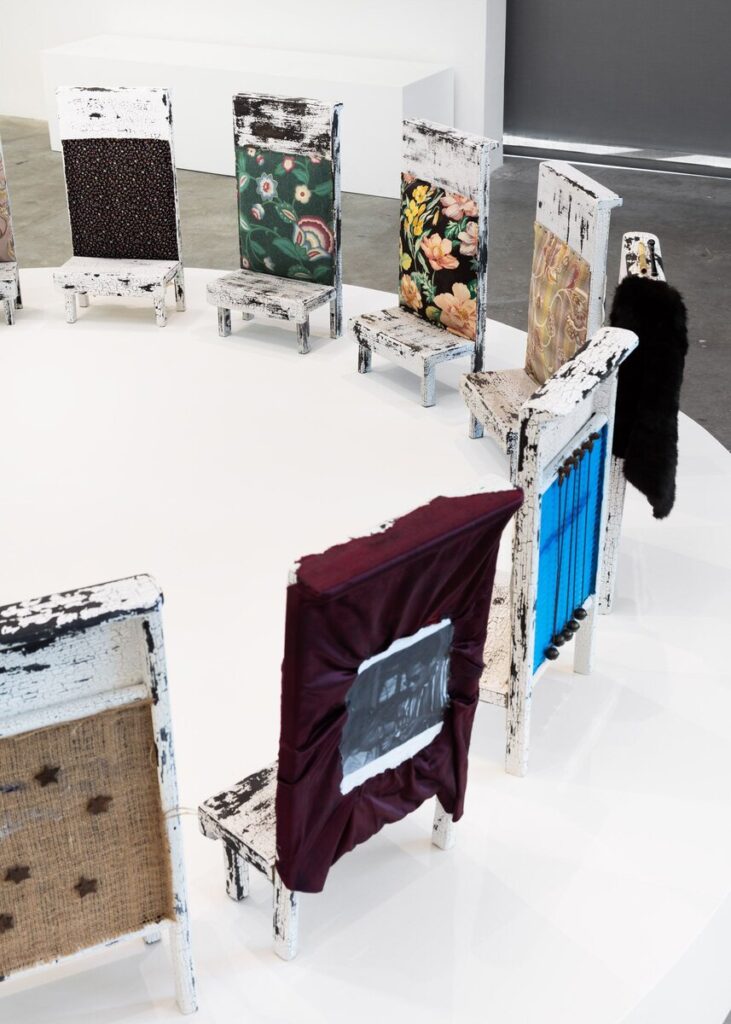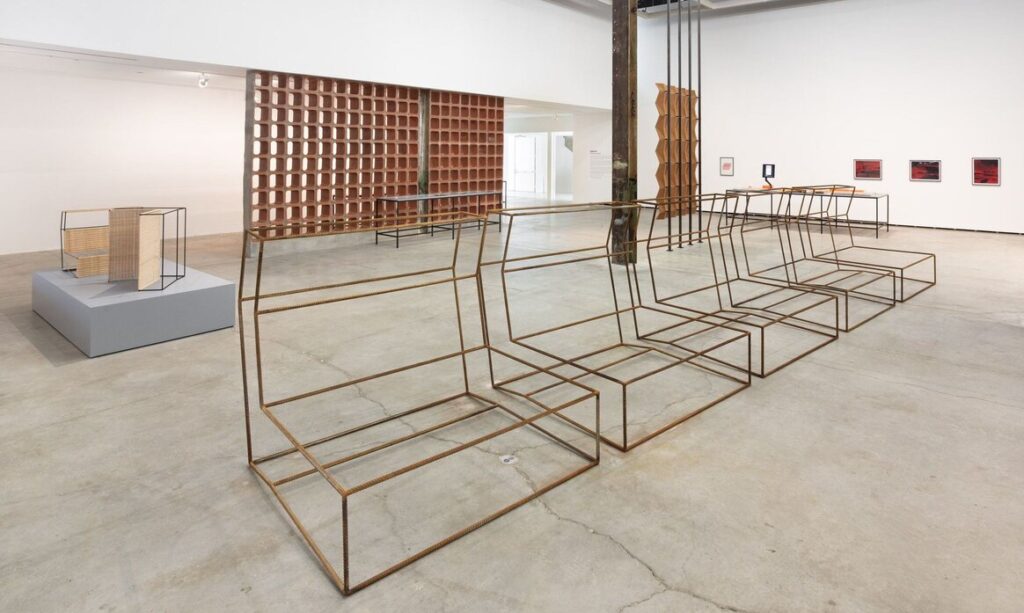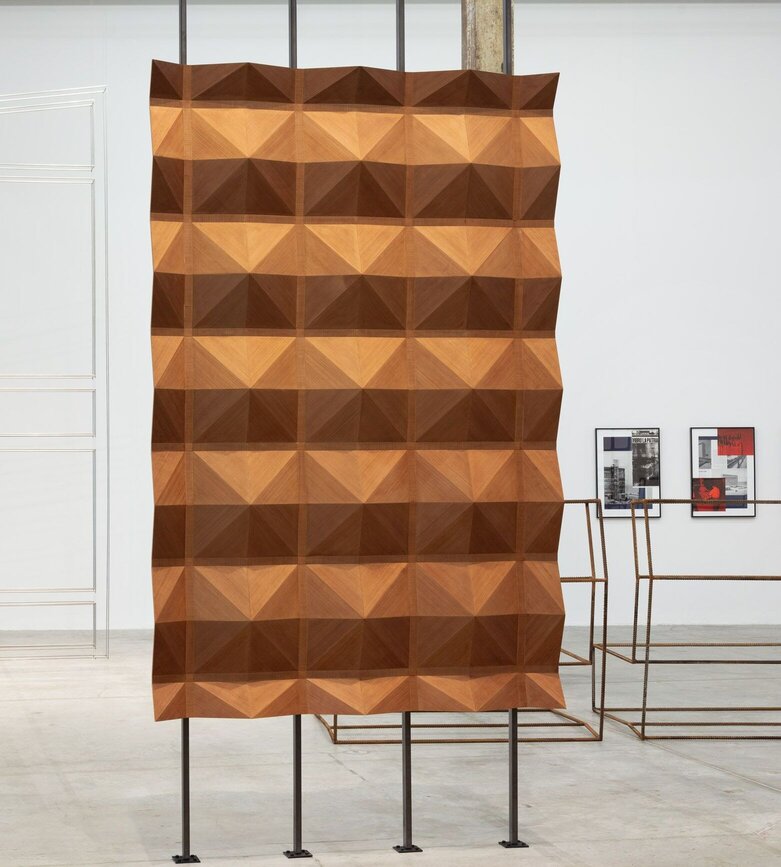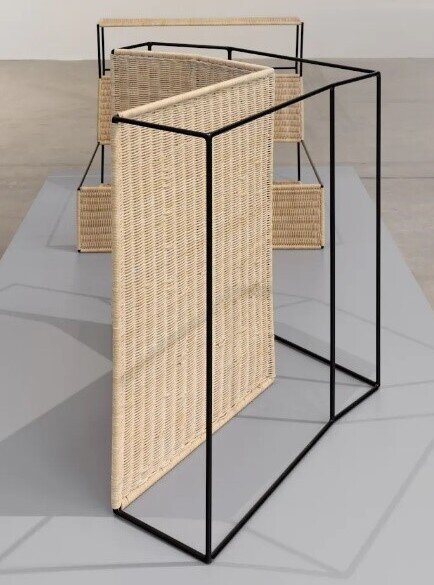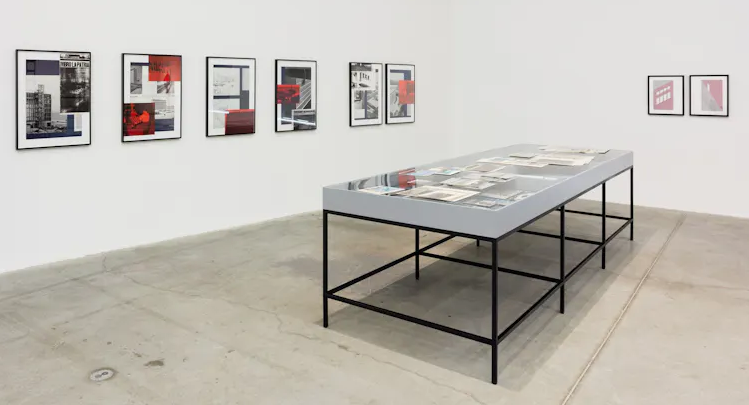Organized by The Power Plant, June Clark’s Witness brings together four pieces of work from the 1990s to now, with many of them being previously unseen. Terence Gower’s Embassy features four multi-part installations representing over a decade of work based on his research into the diplomatic architecture of the United States.
Clark is a Toronto-based artist who has developed a unique practice spanning photo-based work, text, collage, installation, and sculptural assemblages. In this very personal exhibition, Clark explores how history and memory have shaped her work and outlined her identity.
June Clark, Harlem Quilt, 1997, photo-transfers on fabric, lights, wire, dimensions variable
In 1996-1997 Clark created the Harlem Quilt, one of the most eye-catching pieces of her show. In a darkened room, with a single bench in the middle, visitors are surrounded by hundreds of images, printed on fabrics, from Clark’s hometown. It represents her journey from her homeland after being away for 26 years and then returning. She had a camera attached to her waist in Harlem and took hundreds of spontaneous photographs of people in various street scenes, between 110th and 168th Streets. All images then were individually selected and transferred onto swatches of multi-colored and textured clothing and bed linen, that were purchased at a Harlem Salvation Army Store. These pieces encapsulate the lives of people in Harlem, Clark’s hometown, even though that she moved away. Past memories and present moments are depicted right beside each other; beautifully representing a journey that has come full-circle. Clark explores her memories and the emotions of her past with a whole new perspective.
June Clark, 1997, photo-transfers on fabric, lights, wire, dimensions variable (detail)
Clark’s “Family Secrets” from 1992 presents 18 cigar boxes containing objects evoking the memory of various individuals who were connected to Clark at a certain time, playing different roles. The artist uses found objects, unremarkable items, like clothespins, spools, nails, and more, but in her hands they become special as they remind her of those she holds dear. I connected most to the cigar box holding three small books. When I was younger and went away with a friend, we both bought small books of a series we enjoyed. These boxes also turn the viewers’ attention to the importance of small objects, gifts and keep-sakes, as even the least impressive-looking one can hold priceless memories.
June Clark, Family secrets, 1992, 18 cigar boxes and mixed media
The installation, titled, “Keepers”, involves numerous chairs covered with fabrics organized in a circle. It reminds us of the elder’s circle, that can be found in many cultures. This is an important, spirited place where history has been kept alive, stories have been told and decisions made. In the absence of people, the textiles still tell their stories.
June Clark, Keepers, 2003 – 2023, mixed media
Terence Gower’s Embassy employs a range of media that investigates postwar material and intellectual histories in connection to art and architecture. Gower’s expansive artistic collection, including archival documents, sculptures, videos, and works on paper, are the product of his expansive research. Both explore various kinds of art forms while addressing different topics.
Installation view of Terence Gower, Embassy, 2024
Terence Gower “Baghdad Screen” was created in 2012 and is the centerpiece of the Baghdad Case Study, a study of Jose Luis Sert’s 1960 US embassy complex in Baghdad. It was created in a different period in the history of US Foreign Building Operations. In the 1960s the embassy’s place was designed with an open concept, involving cultural context in a transparent building. This sculptural piece was based on the roof of the ambassador’s residence. As the artist statement explains, it is “evocative of both geometric decorative detail and the multi-dome spanning system of the caravanserai and bazaar.”
Installation view of Terence Gower, Embassy, with Baghdad Screen, 2012, red cedar-veneered plywood, brass 6.2 x 1.7 x 0.8 m
“Havana Case Study” is based on research in Havana and in the US National Archives. In 1953 a State Department inspector’s report recommended the removal of the new US embassy’s balcony, because of its “Mussolini-style” could be associated with US imperialism.
Terence Gower, (Havana) Modules, 2016–2018, two steel and wicker sculptures
In “Havana Case Study” we can also see 6 collages that explore the project further, coming from two separate research profiles. By using these documents and photographs from the architect’s files, the State Department archives, trade journals, and material samples, viewers can explore the development of design in the architecture of US embassies. Another aspect of this case study is an interactive section where viewers are invited and encouraged to sift through and examine documents, many of them from extravagant propaganda campaigns by both the Cuban and US governments, and how everything, including the architecture, changed after the Cuban revolution.
Terence Gower, Havana Case Study, 2016–2024.
Both June Clark and Terence Gower explore both social and personal history. The two exhibitions are drastically different while both explore the themes of our past and how we have grown as nations and individuals. The Power Plant in Toronto chooses artists who can complement one another according to themes but can target different audiences. Throughout its thirty-five years, the gallery has produced over one hundred influential and award-winning exhibitions and publications.
Cassandra Johnson
Images are courtesy of The Power Plant Contemporary Art Gallery.
*Exhibition information: June Clark, Witness & Terence Gower, Embassy, May 2 – August 11, 2024, The Power Plant, 231 Queens Quay West, Toronto. Gallery hours: Wed – Sun 11 am – 6 pm, Thu 11 am – 8 pm.

